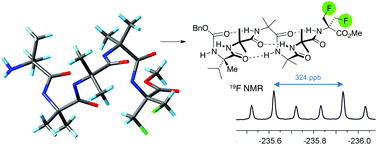Diastereotopic fluorine substituents as 19F NMR probes of screw-sense preference in helical foldamers†
Abstract
Ligating simple

* Corresponding authors
a
School of Chemistry, University of Manchester, Oxford Rd., Manchester M13 9PL, UK
E-mail:
clayden@man.ac.uk
b Manchester Institute of Biotechnology and School of Chemistry, University of Manchester, 131 Princess St., Manchester M1 7DN, UK
Ligating simple

 Please wait while we load your content...
Something went wrong. Try again?
Please wait while we load your content...
Something went wrong. Try again?
S. J. Pike, M. De Poli, W. Zawodny, J. Raftery, S. J. Webb and J. Clayden, Org. Biomol. Chem., 2013, 11, 3168 DOI: 10.1039/C3OB40463C
To request permission to reproduce material from this article, please go to the Copyright Clearance Center request page.
If you are an author contributing to an RSC publication, you do not need to request permission provided correct acknowledgement is given.
If you are the author of this article, you do not need to request permission to reproduce figures and diagrams provided correct acknowledgement is given. If you want to reproduce the whole article in a third-party publication (excluding your thesis/dissertation for which permission is not required) please go to the Copyright Clearance Center request page.
Read more about how to correctly acknowledge RSC content.
 Fetching data from CrossRef.
Fetching data from CrossRef.
This may take some time to load.
Loading related content
